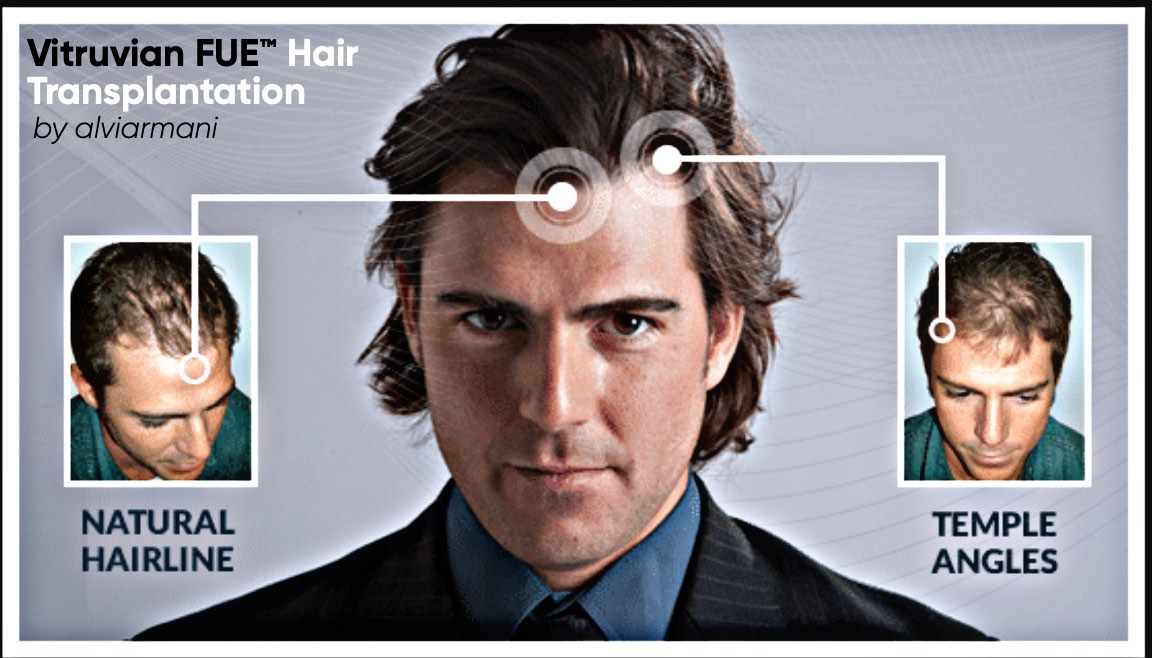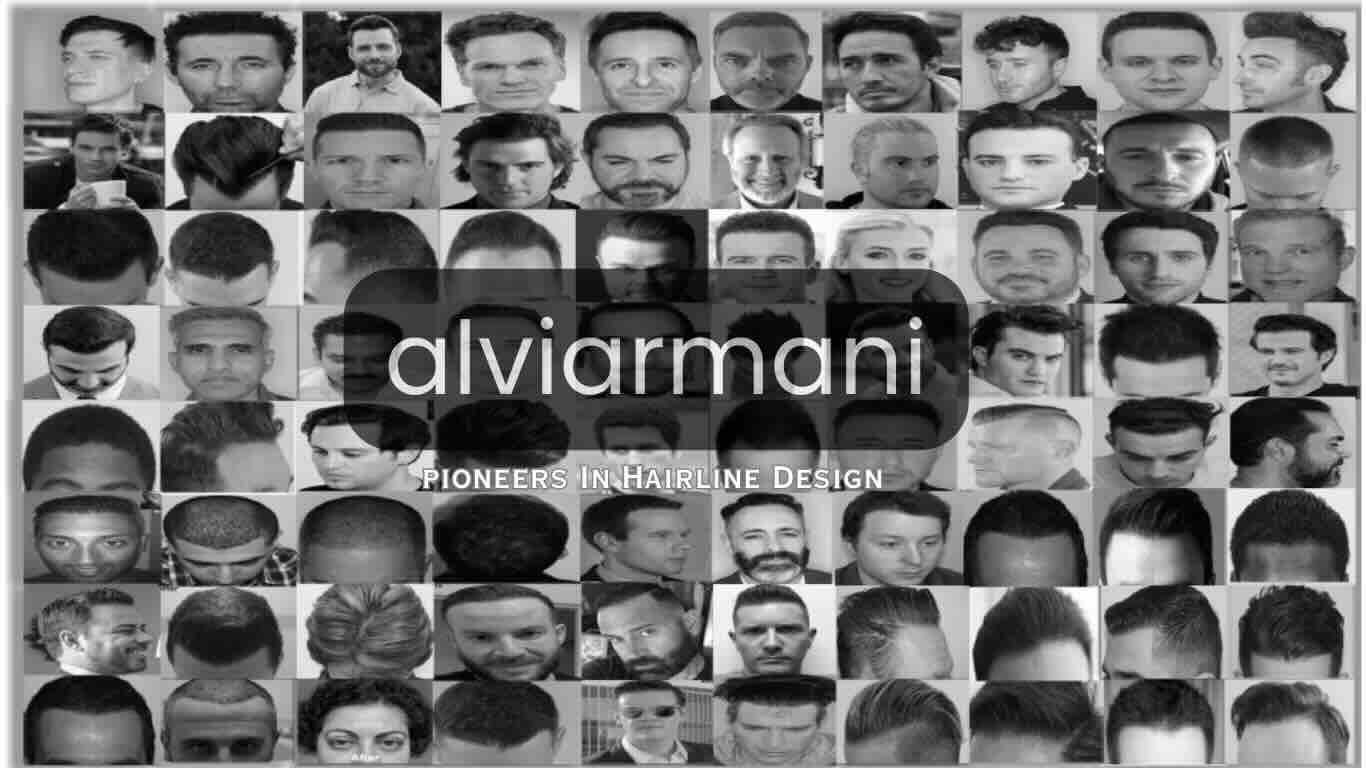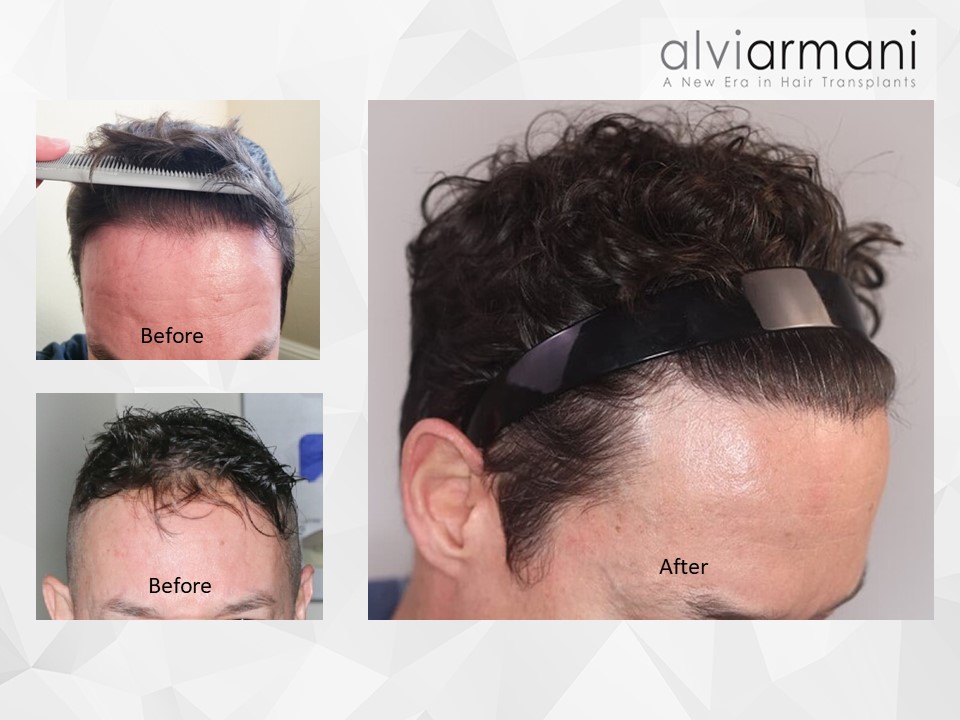A Guide to FUE Hairline Lowering with AlviArmani
Redefine Your Hairline. Refine Your Confidence.
At AlviArmani, hairline lowering isn’t just cosmetic—it’s a restoration of facial harmony. For those with high foreheads or signs of hair recession, our minimally invasive hair transplant procedure uses advanced FUE techniques to sculpt a natural hair growth pattern without linear scarring. Guided by our proprietary Vitruvian FUE™ Design, we align facial proportions, symmetry, and identity into every result.
Our approach isn’t limited to aesthetics—it’s rooted in how your features function together. By designing a hairline that holistically complements bone structure and hair flow, we create harmony that enhances confidence in subtle, powerful ways. Learn more about our temple enhancement and hairline design techniques to see how we refine facial balance with precision.
What Is Hairline Lowering and Who Is It For?
Hairline lowering is more than a cosmetic procedure—it's a re-invention of the hairline to create a balanced, age-appropriate frame. Whether you're addressing a disproportionately large forehead, correcting male pattern baldness, or seeking gender-affirming refinement, our personalized plans are grounded in both science and artistry.
Every patient is different. That’s why we develop a bespoke treatment plan using diagnostic measures including scalp laxity, history of hair loss, and anatomical mapping. With this foundation, we ensure your hair transplant surgery reflects both long-term goals and immediate expectations.
Who Can Benefit From Hairline Lowering?
- High Hairlines or Receding Temples: Restore balance to the upper face
- Gender-Affirming Refinement: Feminize or masculinize the hairline position with anatomical precision
- Stable Hair Loss Patterns: Ideal for lasting outcomes with fewer future adjustments
Female patients often combine hairline lowering with temple refinement to enhance symmetry and reduce the appearance of a large forehead. Whether your goal is corrective or elective, we evaluate whether you’re a good candidate based on natural density, donor supply, and overall facial balance. Learn more about how we design temple recession enhancements for lasting symmetry.
Ready to Re-Invent Your Hairline?
Contact Us For An Assessment Today.
FUE Hairline Lowering vs. Forehead Reduction Surgery
Surgical Forehead Reduction (Scalp Advancement)
This reconstructive surgery involves advancing the scalp after removing excess forehead skin, typically under general anesthesia. Most often performed by a plastic surgeon, it delivers immediate change—but not without compromise:
- Scar formation
- Nerve damage risk
- Prolonged use of pain medication
- Less control over shape refinement
The risks of forehead reduction surgery make it less ideal for patients seeking subtlety, temple framing, or scar-free healing.
FUE Hairline Lowering: The AlviArmani Way
Our refined hair transplantation method uses follicular unit extraction (FUE) to reposition the front of the hairline using your own hair follicles—with no scalpel and no stitches.
Key advantages:
- Vitruvian Design™: Aligns mathematically ideal proportions with personal features
- Zone-Based Density: Mimics natural hair growth from the root up
- Temple Framing: Enhances femininity or sharpens masculine edges
- Minimal Downtime: Return to light activity the next day
Our method is particularly effective for patients seeking to lower hairline height without sacrificing natural curvature or long-term adaptability.

Advancements in Hairline Design: The Science Behind Vitruvian Precision™
Since 1999, Vitruvian FUE™ Design principles have guided every AlviArmani procedure, combining classical ideals of symmetry with modern innovation. Today, AI facial mapping and biometric modeling confirm what we’ve practiced for decades:
- M-shaped hairlines benefit men seeking natural masculinity
- Rounded, downward-sloping contours best suit female patients and feminization cases
We evaluate:
- Golden ratio alignment to optimize facial proportions
- Brow height and arch
- Volume and curvature along the temples
- Hair direction and curl pattern to ensure seamless hair grafting
- Consistency with desired look and ancestral roots
Our philosophy is simple: use data and design to create results that feel organic from every angle. To see how our approach translates into real-world results, explore our hairline lowering technique with FUE.
The AlviArmani Experience: From Consultation to Craftsmanship
Our approach to FUE is engineered for both comfort and results:
- Vitruvian Facial Analysis
- Donor Site Evaluation and pre-surgical density assessment
- Preoperative Enhancements
- Vitruvian FUE™: Microsurgical, artistic grafting, physician-led harvesting
Adjunct Therapies:
- Amp-T-PRP to stimulate hair growth
- Ampligraf Pre & Post formulas for optimal healing
- Procedure performed under local anesthesia in a luxury outpatient setting
- One seamless, single procedure with transformative impact
Recovery Timeline & Aftercare
- Days 1–14: Minor swelling, redness; avoid strenuous activities
- Months 1–3: Expected shedding; grafts enter natural growth cycle
- Months 3–6: Visible hair growth, softening of contours
- 12 Months+: Fully integrated hairline and long-term stability
We provide detailed instructions and support at every stage to ensure successful surgery and ideal healing.


Ready to find out more?
Drop us a line today for an assessment!
Designed to Last. Built for You.
Our FUE outcomes are calibrated not just for impact—but for permanence. We design with aging, shifting hair density, and personal style evolution in mind. That’s why patients across the globe choose AlviArmani for hair transplant procedures that stand the test of time.
Why AlviArmani Is the Global Standard for Hairline Design™
- Aesthetic Excellence: We sculpt, not stamp
- Technology Without Compromise: Includes regenerative science and advanced harvesting tools
- Real Patients. Real Results: Thousands of satisfied transformations since 1999
- Vitruvian Design™: Personalized symmetry rooted in the golden ratio
- Reputable Clinic: Led by qualified hair transplant surgeons with extensive experience
Conclusion
If you’ve considered hairline correction, temple framing, or addressing a large forehead, FUE may be your safest and most satisfying route. Compared to traditional approaches, it offers precision without compromise.
Whether your needs are reconstructive or aesthetic, AlviArmani delivers artistry and excellence in a single, customized session. We preform Vitruvian FUE Hairline Reinvention in Salt Lake City And Beverly Hills FUE surgical centers.
Ready to reshape your future?
Book Your Consultation or call 866.607.6220 to take the first step.

